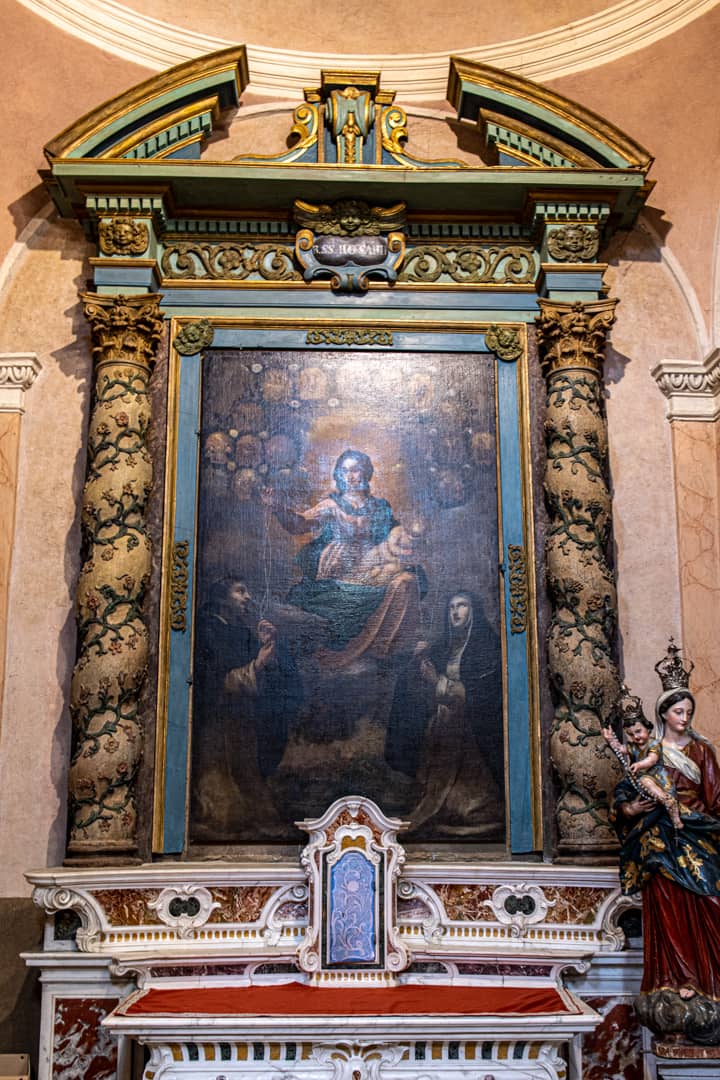The settlement of St. Christopher was located on the edge of the “Forest of the Orba” or “Forest of the Lombards.”






What to see in Tassarolo
- CASTELLO DEGLI SPINOLA
- ORATORIO DELLA CONFRATERNITA DELLA SS ANNUNZIATA
- SOCIETÀ UNITARIA PATRIOTTICA DI MUTUO SOCCORSO
- ROVERE VERDE
- CHIESA PARROCCHIALE DEDICATA A SAN NICOLAO
Rising in the year 1000 as a bulwark against barbarian invasions, it was built around a watchtower placed to defend an important communication route between Liguria and the Po Valley.
The manor was enfeoffed.
It is attributable to Opizzo or Opizzinio Spinola the obstruction of the present castle, which he built after being granted investiture for this and other castles by Henry VII of Luxembourg in 1312.
In 1560 Ferdinand I elevated Tassarolo to a county with the right to mint coinage.
The building was joined by a building, at the foot of the sixteenth-century loggia, called “The Mint” where “spinoline coins” were minted, which we find still present in 1678.
There is a Spinola collection called “Corpus Spinolae” divided as follows:
- Hymenoptera : 69 boxes, 6000 species
- Homoptera : 29 boxes, 950 species
- Heteroptera : 57 boxes, 1600 species
- Coleoptera : 404 boxes, 21000 species
The brethren wear the characteristic white surcoats with brown matellas trimmed with gold friezes.
The ‘building dates back to 1700, while the bell tower was built in 1789.
It preserves inside the oldest processional and funeral accompaniment banners with related lanterns and crucifixes.
There is a 1600 fresco depicting the Annunciation.
There is also an important mural painting depicting Our Lady of the Guard in front of the parish bell tower.
The Society was founded in 1868.
The historic building was built in 1909.
It is a rare specimen of a hybrid between oak and the cork oak, a leafy Quercus Crenata tree recognized as a tree to be safeguarded and protected, which has been dwelling there for more than 400 years.
It reaches 25 meters in diameter.
Built in 1143.
There are three altars, one of which is the main altar. The high altar is built with fine polychrome marble and was in 1763.
It contains one of the first organs built by Camillo Guglielmo Bianchi, a student of Serassi.
The ‘Ancona above the choir, from the mid-1700s, represents one of the most significant miracles of St. Nicholas.
The Tabernacle for the custody of the holy oils dates back to 1475.
There is also a beautiful painting from the mid-1700s depicting the Annunciation of the Virgin.
Lorem ipsum dolor sit amet, consectetur adipiscing elit. Ut elit tellus, luctus nec ullamcorper mattis, pulvinar dapibus leo.
Lorem ipsum dolor sit amet, consectetur adipiscing elit. Ut elit tellus, luctus nec ullamcorper mattis, pulvinar dapibus leo.
Lorem ipsum dolor sit amet, consectetur adipiscing elit. Ut elit tellus, luctus nec ullamcorper mattis, pulvinar dapibus leo.




















